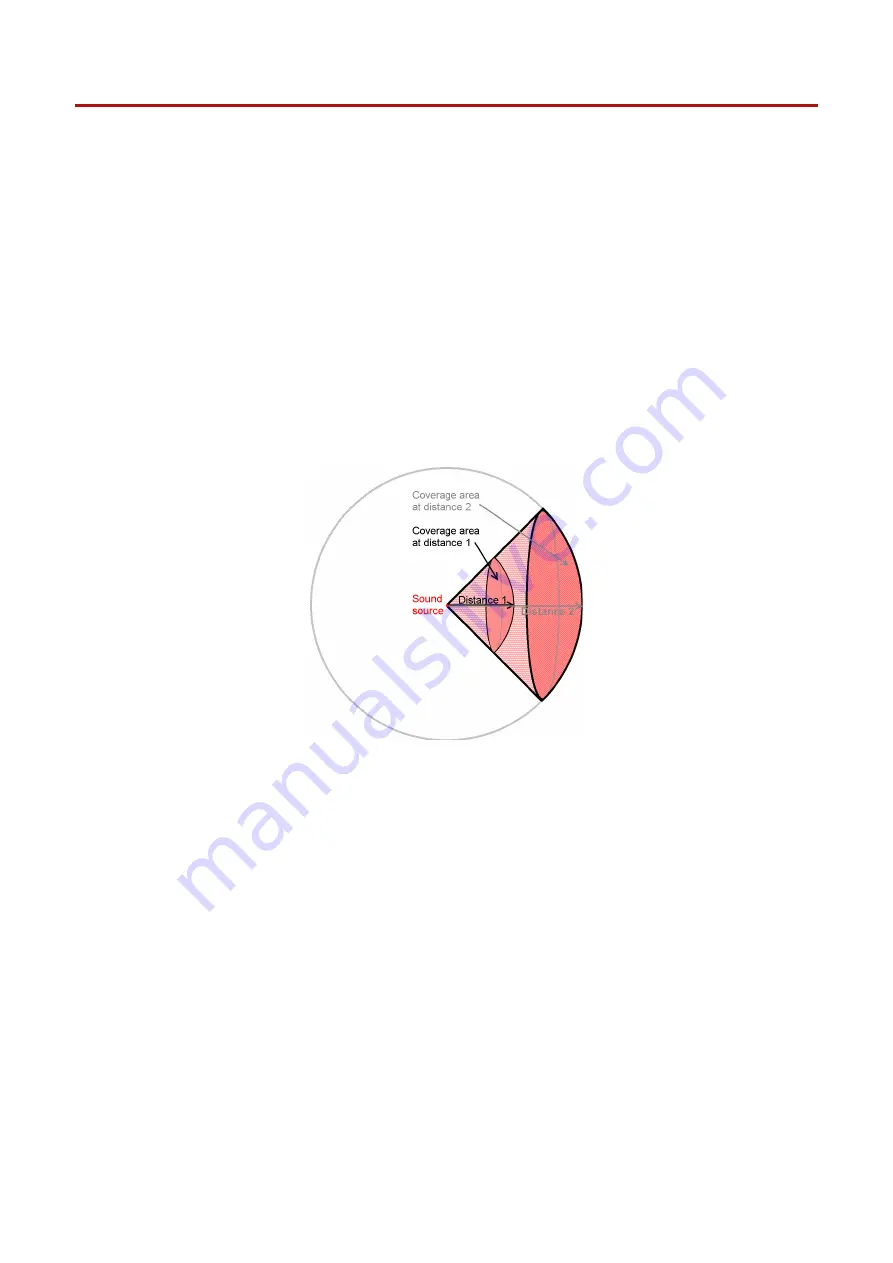
Arcline 8/212 User Guide V1.0
Page 48
11 Appendix A - Line array basics
A.1 Level compensation vs distance
Point sources
Non-line array loudspeakers - and line arrays at low frequencies - tend to have near-spherical
radial radiation characteristics.
Sound radiating from an acoustically small omnidirectional source would radiate in all
directions from a common point source. However, we’ll deal with directional sound sources
(e.g. HF horns) here as these are more typical for PA use.
A directional sound source’s radiation will be restricted to just part of a sphere.
We’ve used a conical horn in this example
Figure A.1: Conical point source
The coverage area will increase by the square of the distance so sound intensity (measured in
power per coverage area - e.g. watts per square metre) will decrease with distance squared.
This is the often-quoted inverse square law.
However, as sound pressure is proportional to the square root of sound power, sound
pressure (measured in force per coverage area – e.g. newtons per square metre or Pascals)
decreases in proportion to the distance (not the square of the distance). In terms of sound
pressure (the parameter most commonly used to measure sound levels in the PA world), we
have an inverse-proportional law not an inverse square law.
So sound pressure from a spherically radiating sound source halves every time you double the
listening distance.
In terms of relative sound pressure, sound pressure decreases by a factor of 20 x Log
10
2 every
time you double the distance - a 6 dB level reduction per doubling of distance.
Summary of Contents for Arcline 212
Page 1: ...Arcline 8 212 User Guide V1 0 ...
Page 71: ......
















































